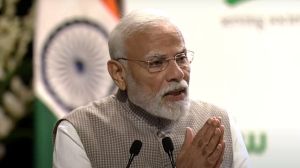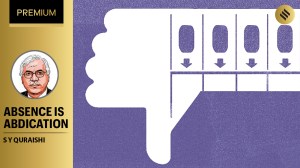To make maize popular in Haryana, ICAR-IIMR organizes ‘Makka Diwas’
Farmers already growing maize in Haryana have informed that they could get a good crop with just 1-2 irrigations, while rice required continuous irrigation under patchy rainfall of this year.
 Experts said that maize, with less than one-third water requirement than rice, is a potential crop to diversify the area under kharif rice. (Representational image via Unsplash)
Experts said that maize, with less than one-third water requirement than rice, is a potential crop to diversify the area under kharif rice. (Representational image via Unsplash)For creating awareness on the potential of maize for crop diversification in Haryana, ICAR-Indian Institute of Maize Research (IIMR), Ludhiana and CIMMYT observed “Makka Diwas” (Maize Day) at Chhattan Village, Shahzadpur Block, Ambala in association with Haryana’s department of agriculture, Thursday.
Haryana’s minister of agriculture JP Dalal was the chief guest at the event.
At Thursday’s event, experts said that maize, with less than one-third water requirement than rice, is a potential crop to diversify the area under kharif rice to address the issue of dwindling groundwater and issue of rice straw burning, particularly in north western Indo-Gangetic plains.
ICAR-IIMR, Ludhiana, in collaboration with department of agriculture, Haryana, has established participatory innovation platforms for maximum yield realization in over 50 fields of Karnal, Kurukshetra and Ambala districts. At these sites, improved agronomic production technologies, improved agro-inputs such as hybrid maize, chemical for disease, pest and weed control and mechanization are being demonstrated in a holistic manner. The platform data suggests that a potential yield of up to 75q/ha is achievable in farmers’ fields in Haryana.
Farmers already growing maize in Haryana have informed that they could get a good crop with just 1-2 irrigations, while rice required continuous irrigation under patchy rainfall of this year.
Haryana agriculture minister, JP Dalal, said that though maize poses best option for crop diversification, it was not gaining much popularity and the government was keen to encourage the crop as an alternative to rice. A pilot project is under consideration to promote maize in the state, where farmers will get assured market and price realization.
Dalal also mentioned that maize for silage will also be promoted in the state. For growing maize crop, a subsidy of Rs 7000 per acre was being given. Scientific studies have shown 30-35 q/ha is achievable plus the fodder with lesser cost of cultivation compared to rice. Hence, there was no reason to not grow maize.
Dr Sujay Rakshit, director, ICAR-IIMR, Ludhiana added that with the highest production of broiler in Haryana, demand for maize was huge to meet the feed requirement of the poultry industry. Further, with the predominant dairy sector, silage maize can bring drastic changes in the scenario with increased milk production and diversification from rice-based cropping system. He particularly highlighted that with reduced crop duration compared to rice, maize enables early wheat plantation, and enabling skipping of terminal heat stress, which has affected the wheat production in this year.
Shri Devi Chand, a farmer of the innovation platform of Chhattan village, Shahzadpur block, Ambala, said that he grows excellent maize crop with only three cycles of irrigation and is expecting 25-30 q/ac yield. He encouraged fellow farmers to adopt maize with improved seed, management practices and mechanization to realize maximum yield.
Experts said that at present the demand for maize in Haryana stood at around 30 lakh tonnes, primarily for poultry. But the state produces only 20 thousand tonnes, which shows the potential of maize in crop diversification in a demand-driven situation.












